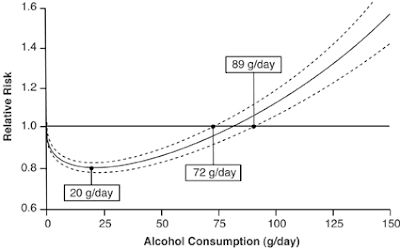This
relationship between alcohol consumption and brain health has been less
clear. Chronic, excessive use is a risk
factor for the development of all forms of dementia. What has been less understood has been if
alcohol and the brain follows a typical dose response curve seen for its intake
and other diseases. Some new research is
suggesting it may.
The study
examined the impact of 3 different daily doses of alcohol on brain “glymphatic
flow” and inflammation in mice. Brain
glymphatic flow is the equivalent to lymphatic flow in the rest of the
body. The lymphatic system is used as a
“highway” that the immune system uses to remove different toxic waste generated
by infections or other exposures.
It was
thought until recently that no lympathic flow occurred in the brain which
created a mystery about how it detoxifies efficiently. Recently some innovative research injected
mice with a tracer that glows when exposed to a specific type of light into the
lymphatic system to better see all of its pathways. Surprisingly, the brain lit up as did the
rest of the body confirming that there is lymphatic flow in this area. The term for it was coined as glymphatic
flow.
In the
recent alcohol study, low alcohol intake increased glymphatic flow 39.8%
compared to the control group consuming none. Higher consumption did just the
opposite decreasing this flow. The
response in inflammatory markers followed the same pattern, improving with low
dose consumption and increasing with high dose.
While this
was an animal model study, dose impact studies on the relationship between
alcohol and other health risks such as cardiovascular disease have supported
the “dose response” relationship with 1-2 drinks daily decreasing the risk
compared to non-drinkers and high dose use increasing the risk. The relationship appears to be similar in the
brain.
Lundgaard et
al. Beneficial
effects of low alcohol exposure, but adverse effects of high alcohol intake on
glymphatic function. Scientific
Reports, 2018;8:2246.






